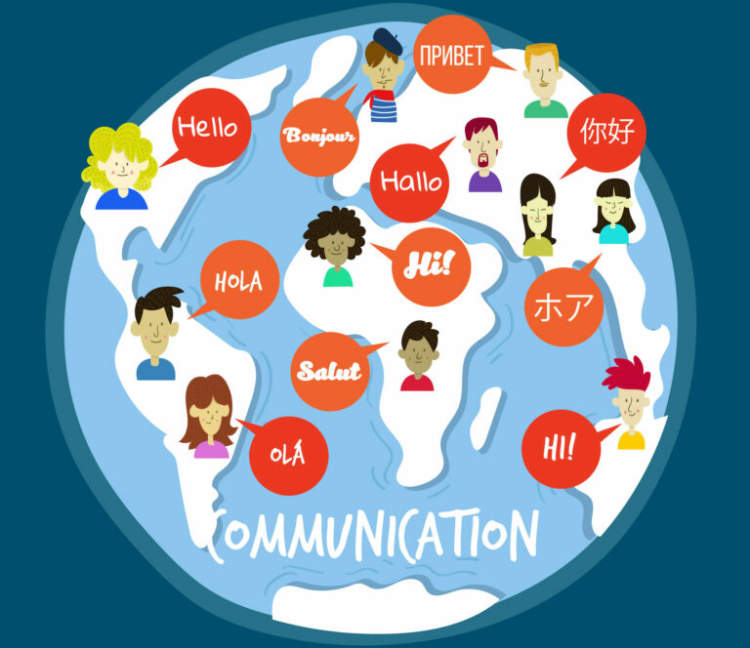When it comes to communication and understanding, Americans are increasingly exposed to foreign cultures and languages. As the US population becomes more diverse and globalized, universities are now offering ESL programs and services to students with language barriers. This article explores how ESL programs are helping US universities overcome language barriers and how universities are developing effective strategies to support students of all backgrounds.
The ESL program at US universities strives to provide support and resources for students who need assistance with their English language skills. Each ESL program offers different types of activities, curricula, and resources to help the students effectively learn the language. These activities range from conversation classes, pronunciation practice, grammar tutorials, and more. By working with each individual student, universities are creating effective language learning opportunities that can be tailored to their particular needs.
What Are ESL Programs?
ESL programs are designed to help non-native English speakers develop language skills. These programs are offered in University settings all around the world, teaching students how to communicate in English effectively without losing the cultural complexities of their own language. Typically, there are two components to an ESL program: a classroom-based program grounded in conversation and written exercises, and an immersion-based program which immerses students into an English-speaking environment.
Classroom-based ESL programs provide students with theoretical instruction in English Grammar, syntax, pronunciation and usage. Conversational English is branded through interactive conversations and role-playing activities. ESL teachers provide students with a range of materials, ranging from games and books, to interactive media. To complete an ESL program, students must pass a portfolio assessment, which includes composed work, such as short essays and articles.
Immersion-based ESL programs offer students the chance to practice and experience English in action and in everyday life. These programs range from full immersion initiatives, such as staying in an English-speaking household, to language workshops and job internships in an English-speaking environment. As part of these programs, students learn not only the language, but also the culture of the place where they are staying.
The Benefits of ESL Programs to US Universities

ESL (English as a Second Language) programs are becoming increasingly popular among US universities as they overcome language barriers and provide many other benefits. An ESL program allows native English speakers and those who come from different language backgrounds to interact and succeed academically. It also provides universities with the opportunity to demonstrate their commitment to internationalization. Here are some of the benefits of ESL programs for US universities:
Improved academic achievement
ESL programs at US universities provide students with the resources they need to expand their English language skills and succeed academically. This can lead to higher grades as students are better able to comprehend material presented in class, as well as improved critical thinking and problem-solving skills. Additionally, ESL programs give non-native English speakers a chance to become comfortable communicating in English, which can help boost their confidence.
Improved job opportunities
ESL programs at US universities can also help to increase job opportunities for students. By taking part in an ESL program, students are able to improve their English language skills, which can open up a variety of job opportunities in the US and abroad. Additionally, ESL programs often provide English teaching certification, which can further enhance students’ job prospects.
Increased cultural understanding
ESL programs also have the potential to open up new cultural experiences, as they bring together students from a variety of language backgrounds. This can help to foster international understanding, as well as introduce students to different cultural perspectives, which can be invaluable in today’s globalized world. Additionally, students enrolled in ESL programs can also benefit from increased networking opportunities, which can help to boost their career prospects.
Improved university reputation
Finally, ESL programs can help to improve the reputation and standing of US universities on the international stage. By showing their commitment to providing quality language education, universities can demonstrate their dedication to internationalism and open up more opportunities for foreign students. This can also serve to attract more international students, which can help to diversify the student body and contribute to a more global outlook.
How ESL Programs are Addressing Language Barriers in Universities
With the increase in international students enrolling in universities throughout the United States, language barriers have become a major issue impacting higher education. Programs and initiatives developed by universities to address these issues are referred to as English as a Second Language (ESL) programs. These programs provide students from around the world the skills, resources, and strategies needed to effectively communicate in English and succeed in their academic endeavors. Here are just a few of the ways in which ESL programs are helping US universities overcome language barriers:
- Providing a range of ESL language services including language assessment, class instruction, tutoring, and resources for self-study.
- Fostering collaboration between international students and native English-speaking students, which helps to bridge communication gaps.
- Connecting students with faculty and staff who can provide individualized support and assistance.
- Creating a comprehensive language curriculum that motivates and encourages students to further develop their English skills.
- Providing an array of workshops and seminars led by experienced ESL experts, which help to build confidence in speaking, listening, reading, and writing English.
In addition to helping international students become more proficient in English, U.S. universities that offer ESL programs also provide a safe and supportive learning environment, which helps these students feel more comfortable in their new surroundings. Furthermore, ESL programs are able to provide career support services, such as help navigating the job market and resume writing, which can help international students gain the skills necessary for finding relevant employment after graduation. Through the implementation of ESL programs, universities are offering more opportunities for international students to feel accepted and valued in their institutions and helping to bridge any communication gaps that may exist. ESL programs are a valuable asset in helping universities and international students alike to overcome the language barriers and any other challenges they face during the transition period.
Conclusion
ESL programs have been proven to be a valuable asset for US universities looking to overcome language barriers. Not only do these programs help universities to attract and retain more students, they also provide a tremendous learning opportunity for both international and domestic students. With the proper resources allocated, these programs can provide universities with the extra edge they need to help their students become successful.
The future of ESL programs is bright. As more universities increase their focus on inclusivity and cultural understanding, these programs will become even more successful. ESL programs can have a vast, positive impact on language barriers, diversity, and international relations on US campuses.




